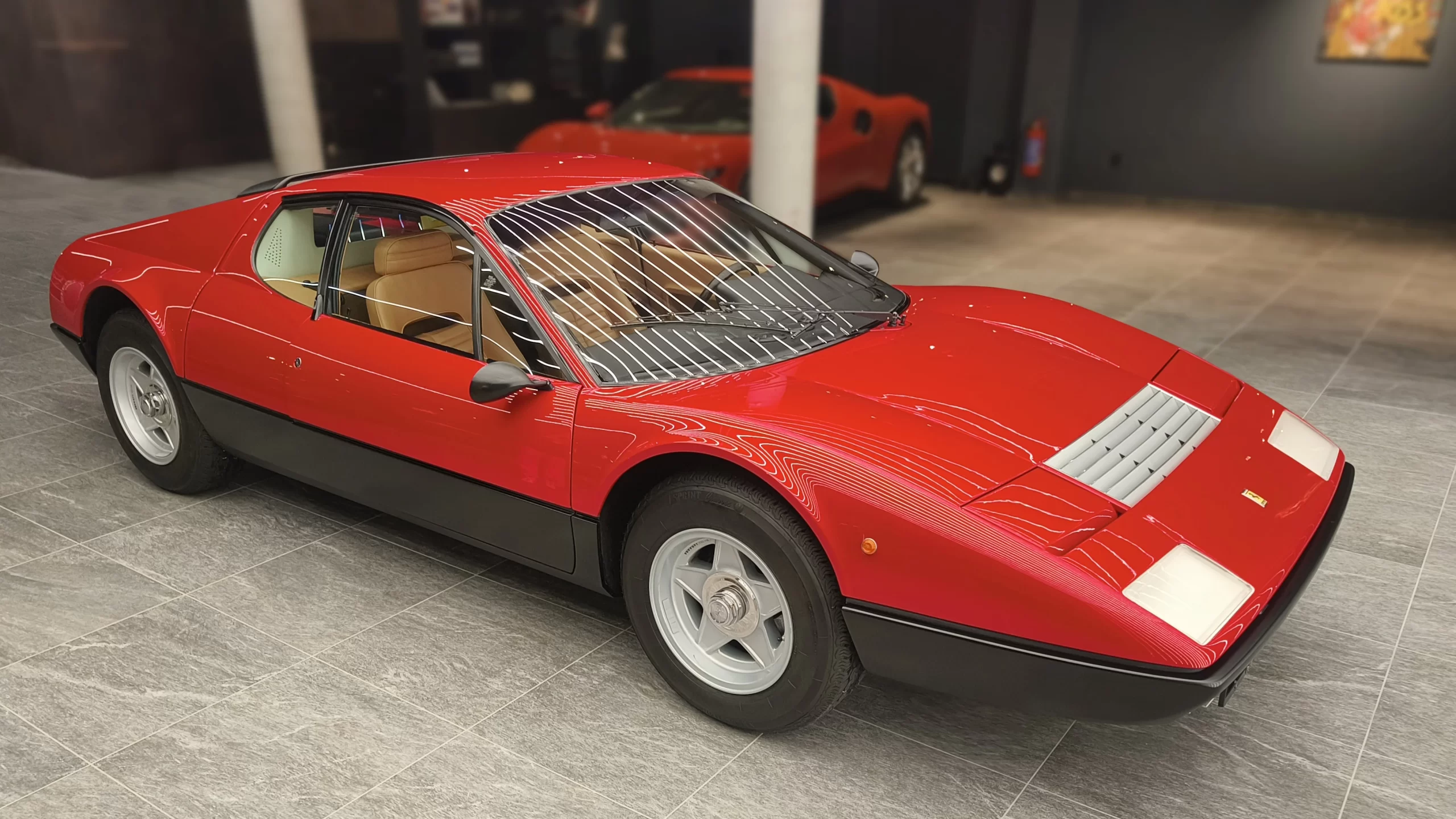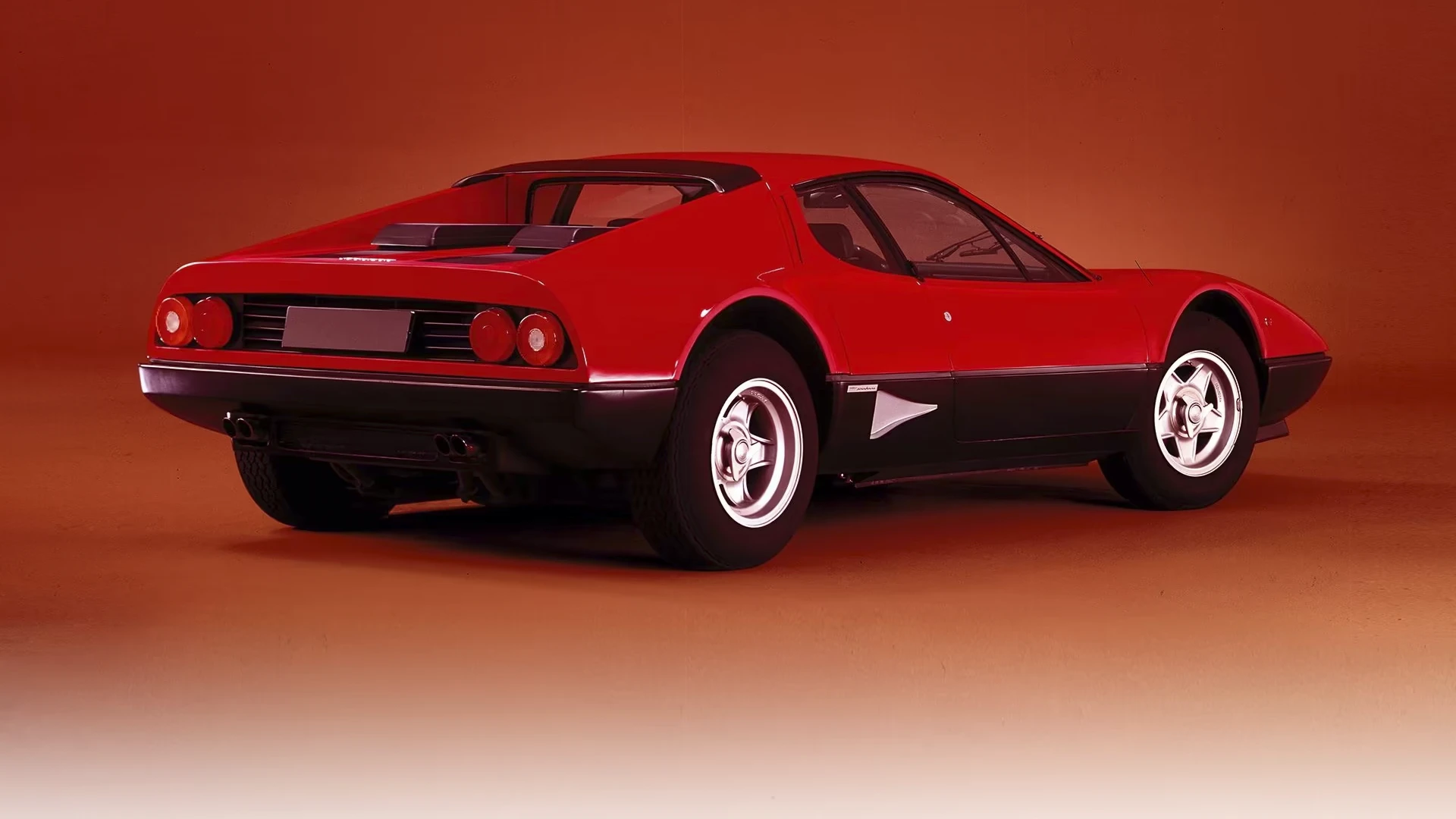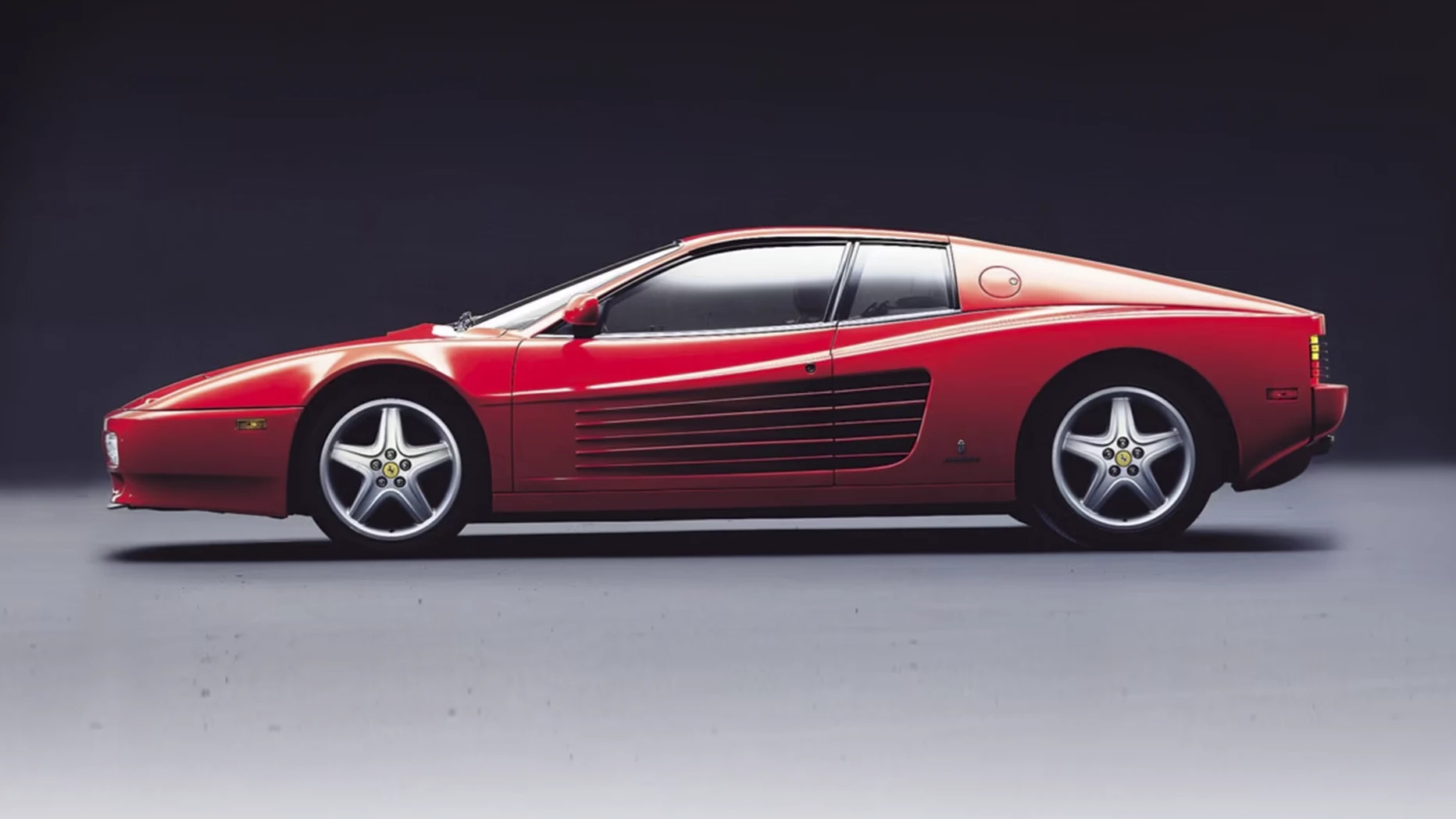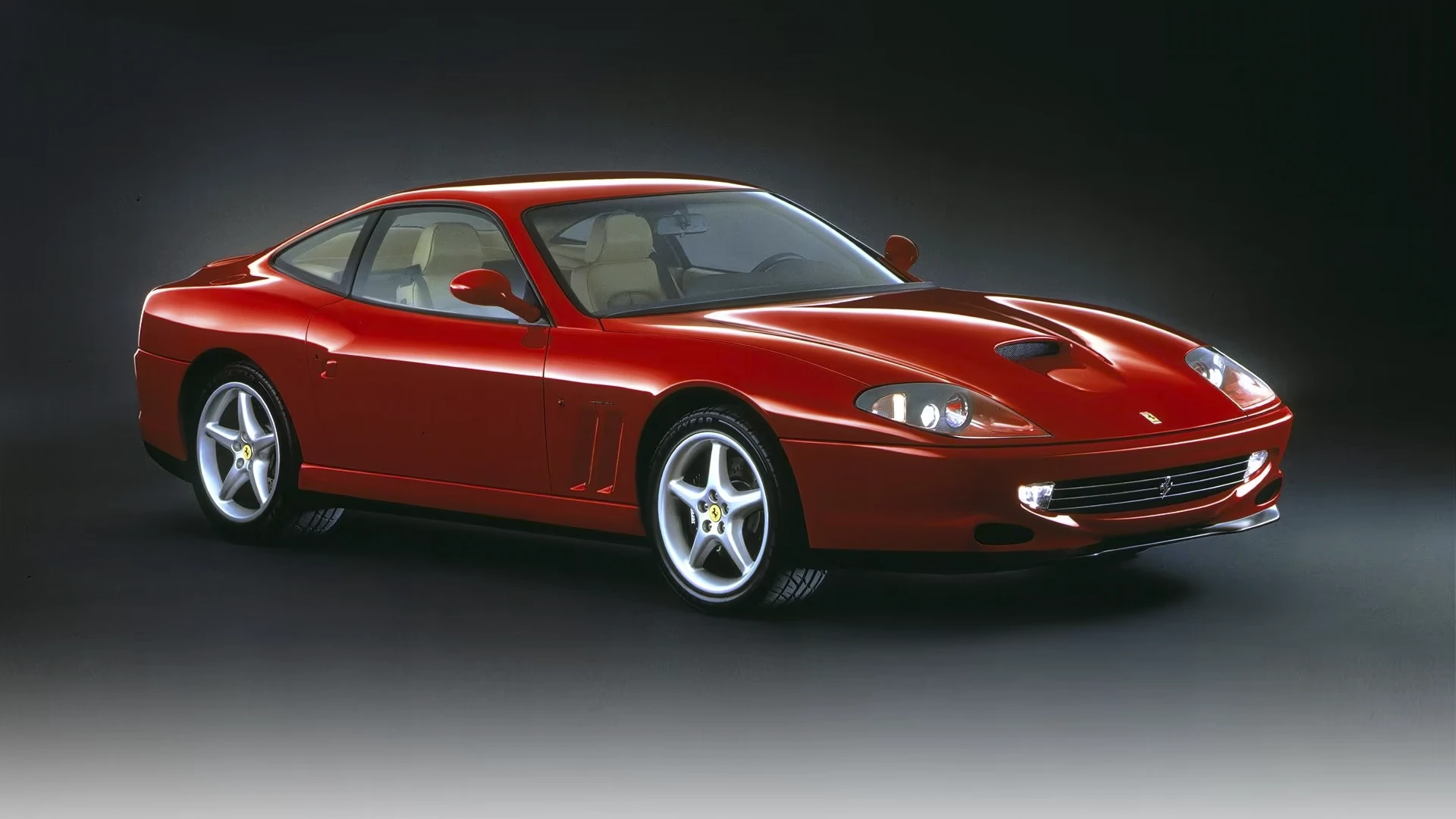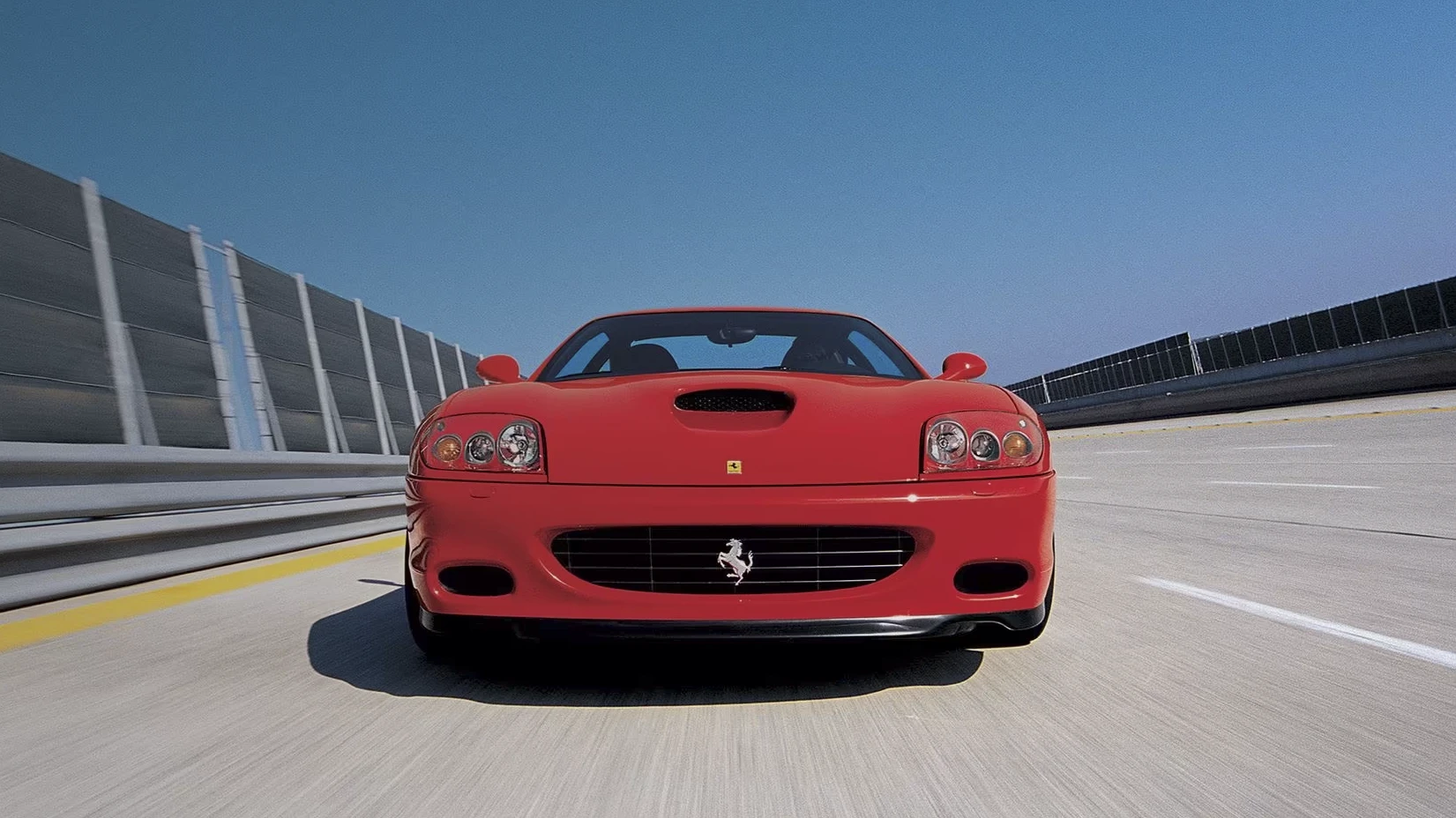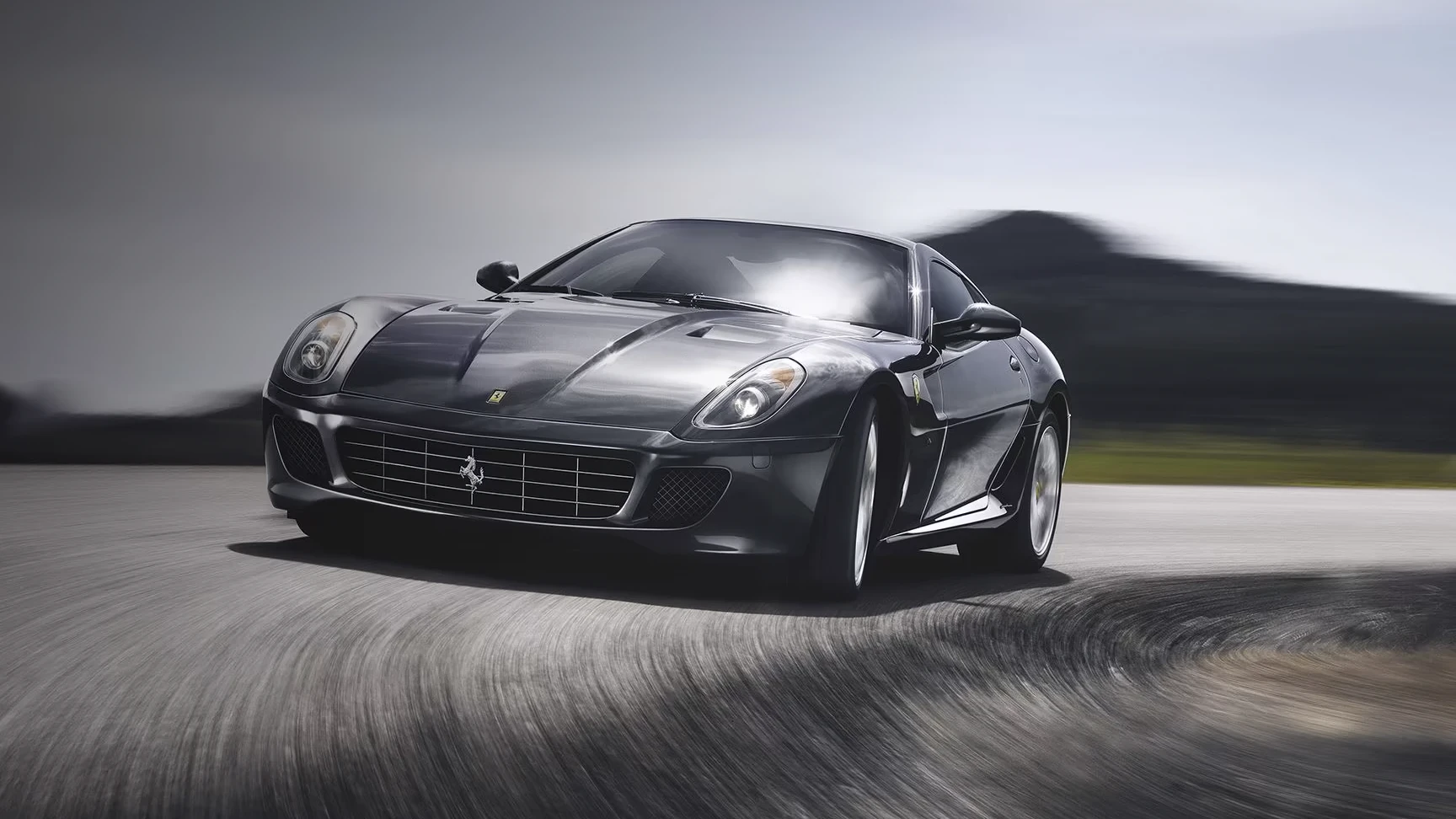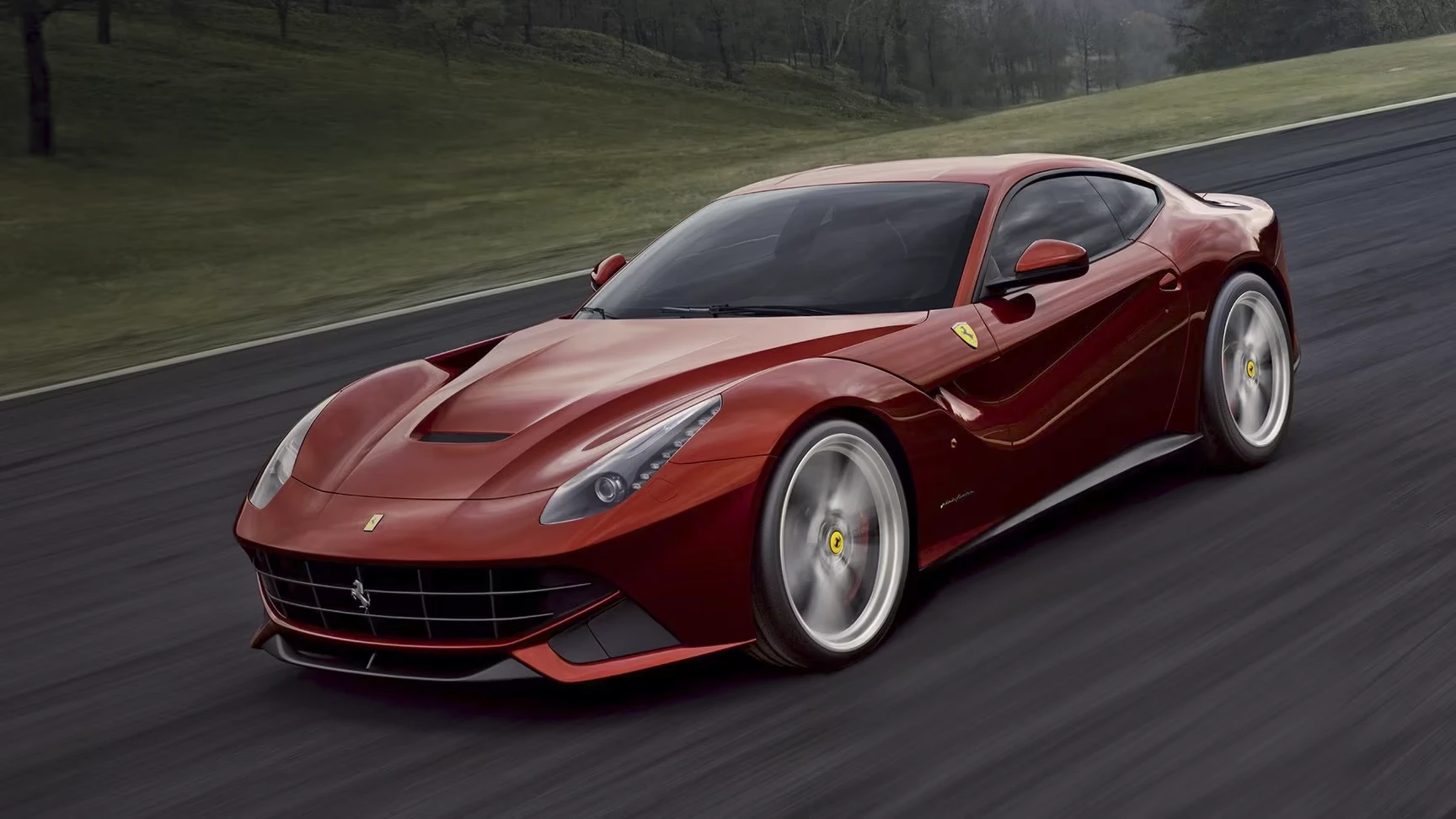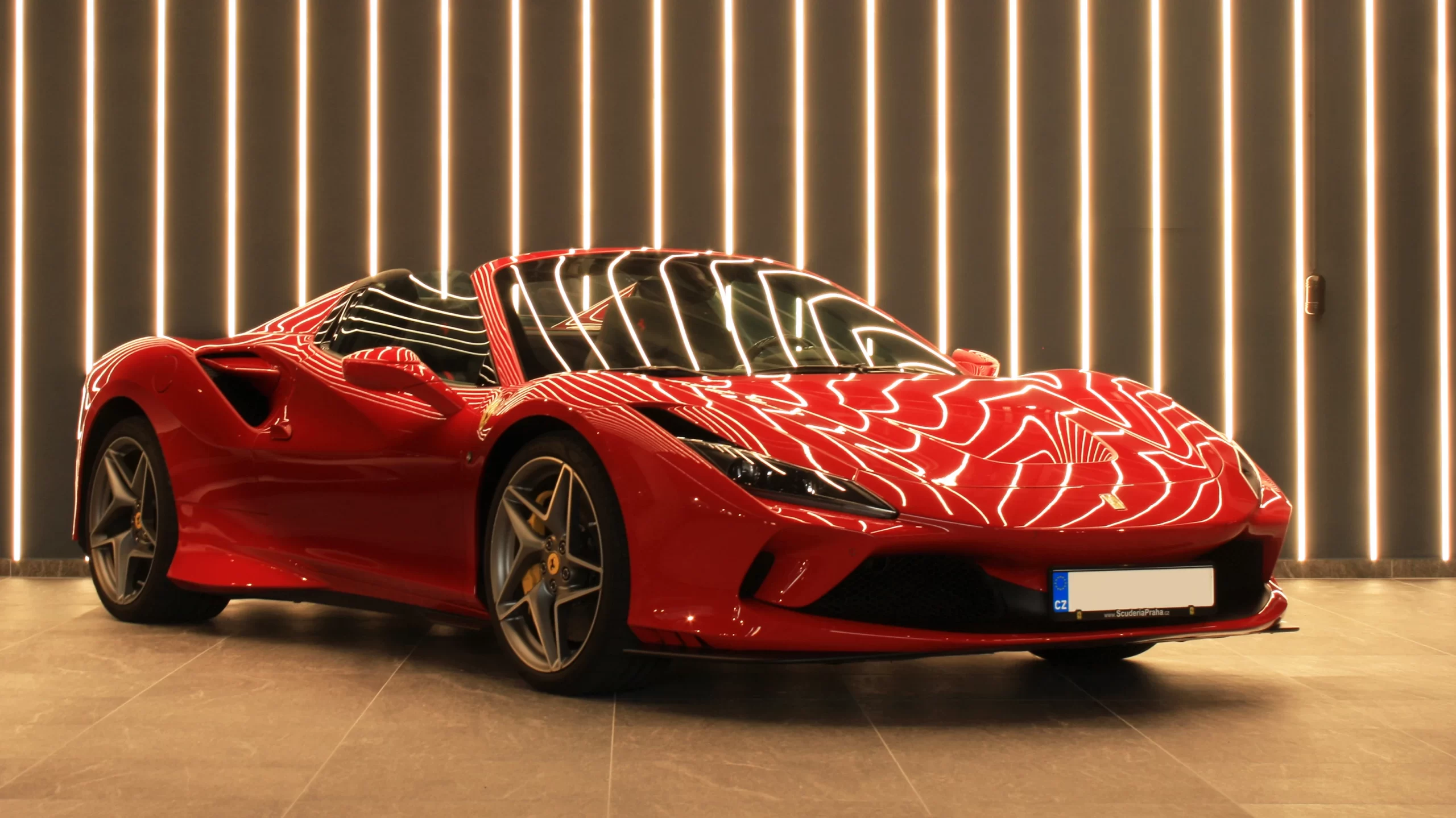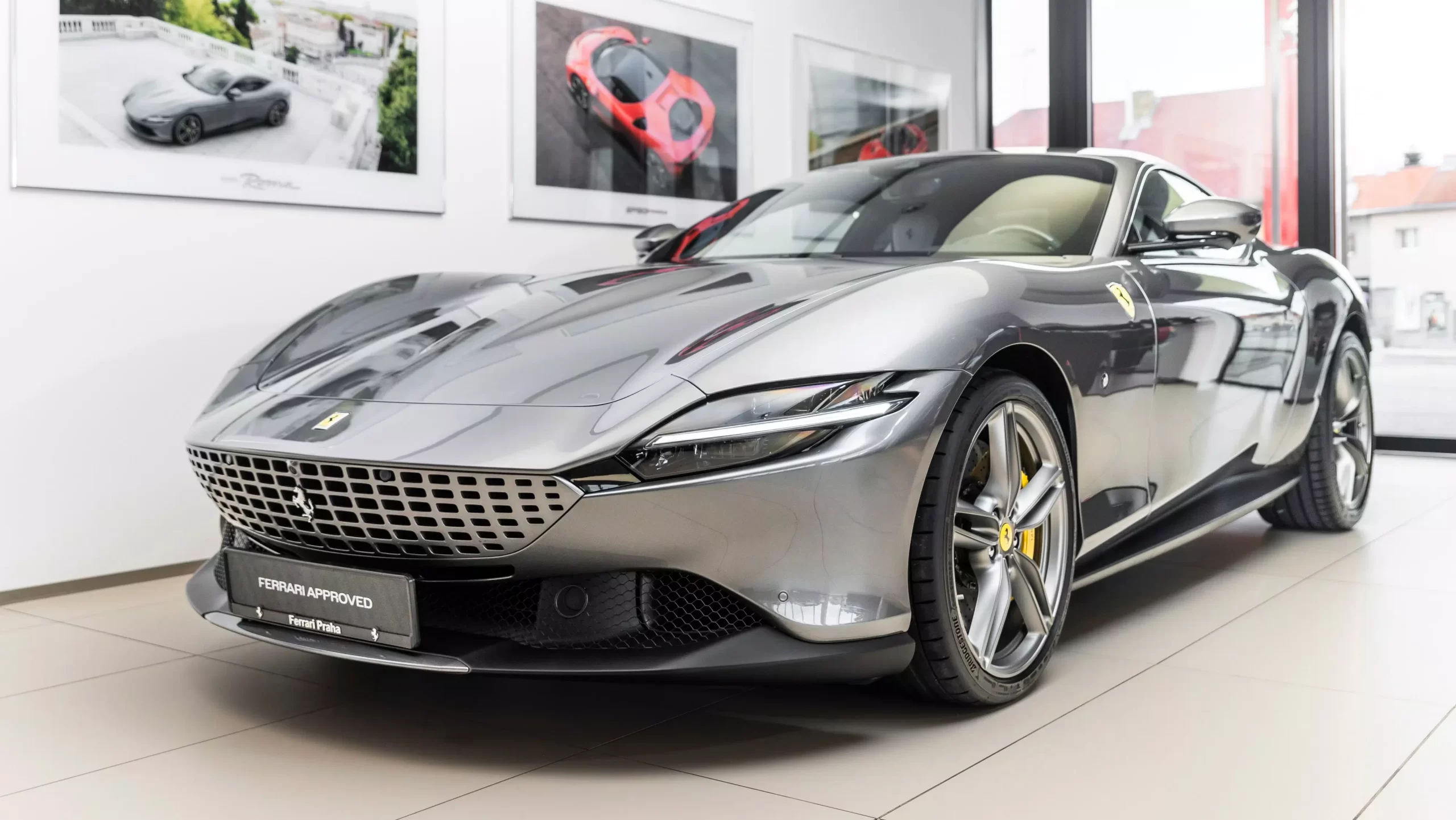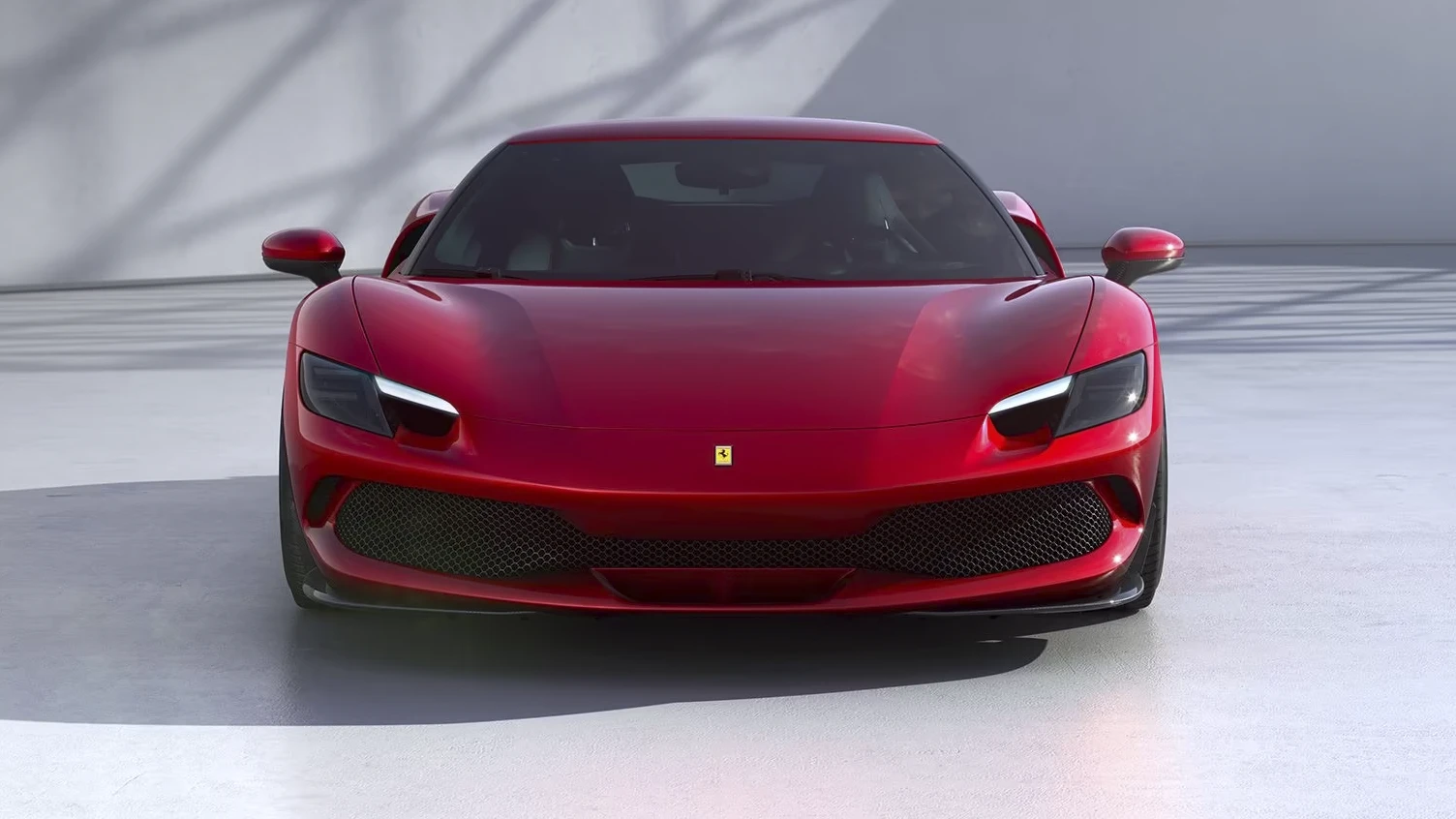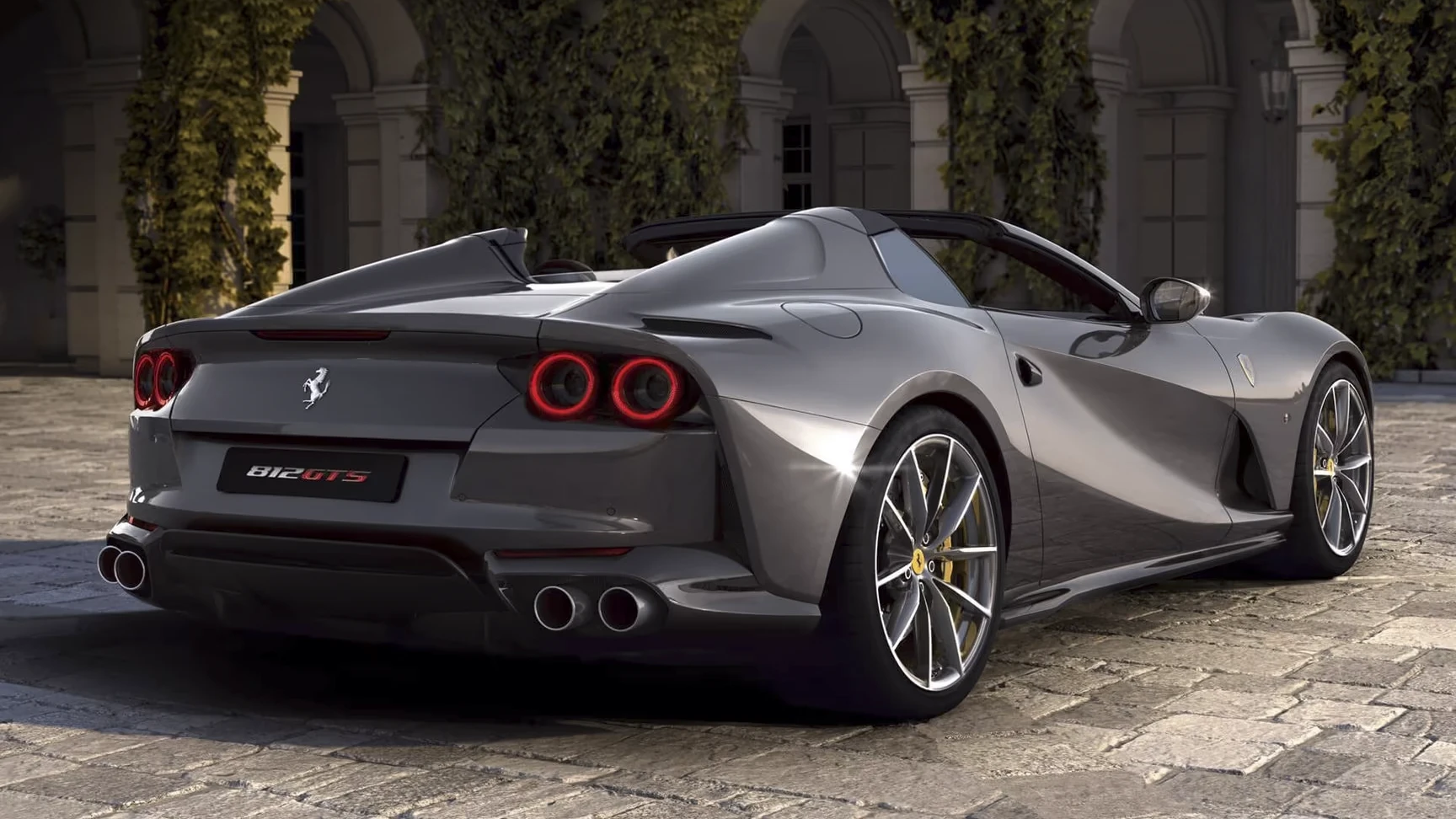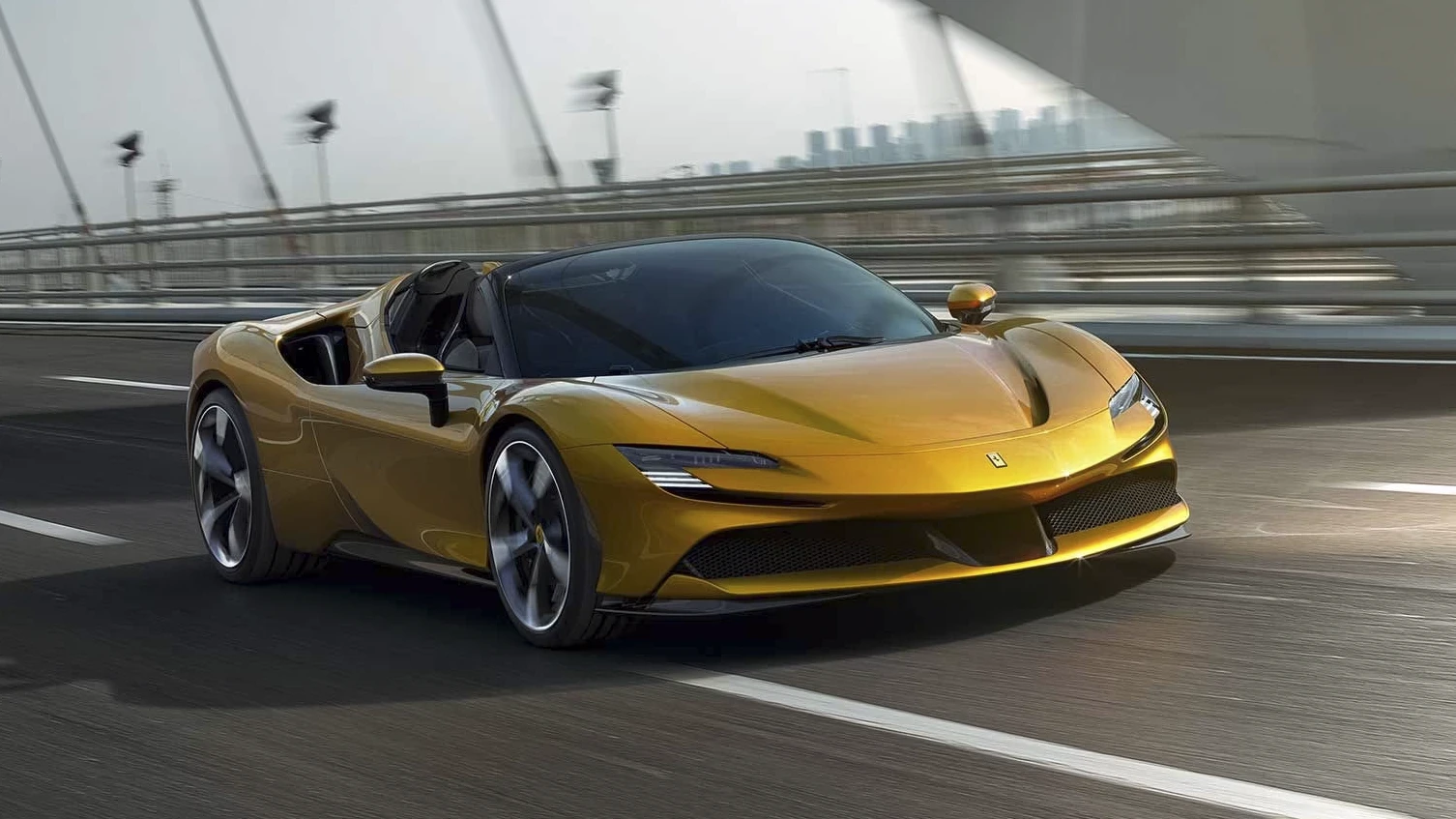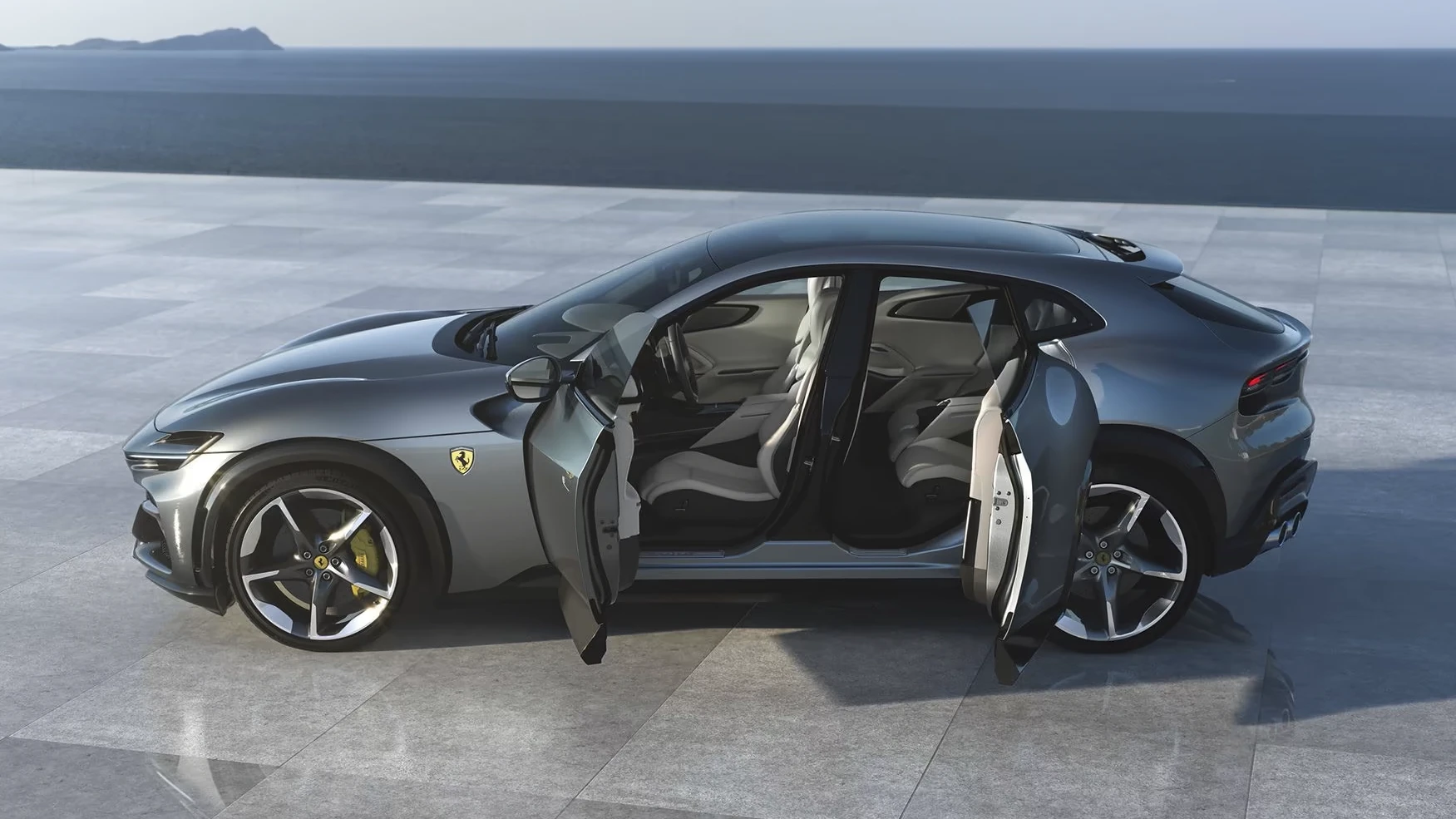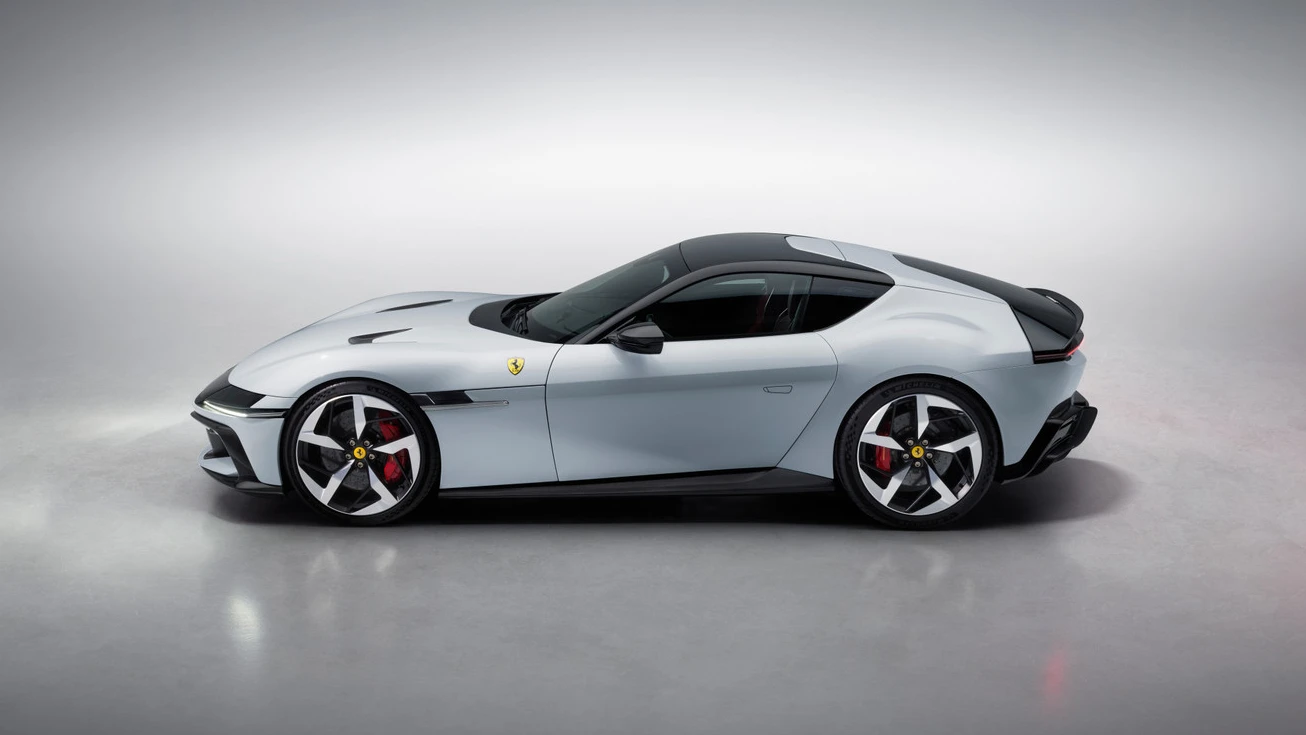We love cars with a prancing horse in their emblem. Check out our collection.
„You cannot describe passion, you only can live it.“
Enzo Ferrari
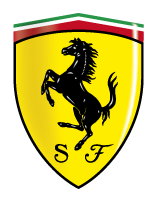 1975
1975
Ferrari 365 GT4 BB
The first rear-mounted V12 boxer engine debuted at the Turin Auto Show in 1971, where it successfully replaced the Daytona model. The two “B”s in the name stand for Berlinetta Boxer, referring to the fact that the engine’s cylinders are arranged at a 180° angle. The engine has a displacement of 4,400 cm³, a power output of 380 horsepower, and a top speed of 300 km/h, making it the fastest car in the world at that time. The wedge-shaped front end is derived from the Pininfarina P6 concept car from 1968. A unique characteristic of this model is its six rear round lights and six exhaust pipes.
Model Official Page
 1976
1976
Ferrari 512 BB, BBi
The Ferrari 512 BB was introduced at the Paris Auto Show in 1976 as the successor to the 365 GT4/BB and was produced until 1981 when it was replaced by the 512 BBi, which featured fuel injection instead of carburettors. During this period, a total of 929 units were produced, with chassis numbers ranging from 19677 to 38487. The name of the new model was much simpler than its predecessor and broke Ferrari’s traditional practice of referencing the displacement of a single cylinder. Instead, it continued the trend started by the Dino series, referring to the total engine displacement and the number of cylinders, meaning a 5-litre engine with 12 cylinders. The “BB” part of the model name still stood for “Berlinetta Boxer,” referring to the two horizontally opposed rows of six cylinders each. The basic principles, shape, and characteristics of the car were similar to its predecessor, but there were minor visual differences that distinguished the two models. The most significant technical difference was the increase in engine displacement.
Model Official Page
 1984
1984
Ferrari Testarossa
The name Testa Rossa, which means “Red Head” in Italian, refers to the colour of the camshaft covers on the sports racing models. The modern model with this name continued the tradition with red-painted camshaft covers. It made its debut in the glittering environment of the Lido nightclub on the Champs Elysées in Paris, on the eve of the Paris Auto Show in 1984, where it was ceremoniously presented to invited journalists and guests before being revealed to the public the following day.
Model Official Page
 1991
1991
Ferrari 512 TR
The twelve-cylinder boxer underwent a series of modifications, including lowering the chassis to reduce the car’s centre of gravity, which improved road grip and reduced roll axis. Power increased by 38 horsepower, and the already generous torque of the twelve-cylinder engine was further enhanced. The 512 TR model, successor to the Testarossa, was introduced for the 1992 model year. The new car returned to numerical nomenclature, where “5” denotes the engine displacement in litres and “12” is the number of cylinders, while “TR” is an abbreviation for Testarossa (Testa Rossa). The main exterior visual changes included revisions to the front and rear, the grille design on the engine cover, and the wheel design. The profiles of the sail panel supports were adjusted to smoothly blend into the roof panel, unlike the Testarossa, which had steps and black perforated air intake grilles. Inside, changes were made to the seat design, steering wheel, and trim details. Many changes were made to the engine and gearbox, increasing performance and ensuring a more satisfying and responsive gearbox operation. Although not visually apparent, the engine and gearbox assembly was lowered by 30 mm in the chassis, further reducing the centre of gravity and improving the already high standard of driving characteristics.
Model Official Page
 1996
1996
Ferrari 550 Maranello
The 550 Maranello benefited from Ferrari’s meticulous attention to aerodynamics with a low drag coefficient (Cd 0.33) and constant downforce on both axles. The combination of uncompromising performance and aerodynamic efficiency helped the car set new speed records for a production car on October 12, 1998, in Marysville, Ohio, when it covered 100 km (62 miles) at an average speed of 304.1 km/h (188.88 mph) and 296.168 km/h (183.955 mph) over one hour.
Model Official Page
 2002
2002
Ferrari 575 Maranello
The features that made the 575M Maranello unique were already indicated in its name. The number 575 hinted at the increase in the effective engine displacement from 5500 to 5750 cc, leading to an increase in power and torque – long-term goals in Ferrari’s development. In line with Ferrari’s traditional terminology, the “M” designation stood for “modificato,” meaning modified, signalling an overall increase in performance. In addition to engine modifications, it was also the first time that an F1-style gearbox was used in a road-going Ferrari V12.
Model Official Page
 2006
2006
Ferrari 599 GTB
One of the unique advantages of the current Ferrari lineup is the F1-type gearbox. In the Ferrari 599 GTB Fiorano model, this technology was taken a step further, leading to the creation of the incredible F1-SuperFast gearbox. The name of this new gearbox incorporates two key concepts that underlie its design: derivation from the ultra-competitive world of Formula 1 and faster shifting times than ever before. It is one of the most innovative and exclusive features of the Ferrari 599 GTB Fiorano and a groundbreaking advancement in road cars.
Model Official Page
 2012
2012
Ferrari F12
In addition to its sheer performance figures, the Ferrari F12 is also incredibly smooth and intuitive to drive, thanks to its unique control system that instils confidence at all speeds, not just at the limit on the track. This has been achieved largely through developmental work on the layout, which has helped the car make a huge leap forward in terms of agility and responsiveness, even at lower speeds, a characteristic more in line with mid-rear engine cars.
Model Official Page
 2019
2019
Ferrari F8 Spider
To achieve their goal of easy access and utilization of the impressive performance of the vehicle, Ferrari engineers worked on integrating engine performance and aerodynamics with the latest iteration of vehicle dynamics control systems. The Side Slip Control system, which enhances driver control at the limit for even more engaging involvement, has been further developed. The transition from version 6.0 to 6.1 reflects the fact that the Ferrari Dynamic Enhancer system is now also activated in the RACE Manettino position (FDE+).
Model Official Page
 2020
2020
Ferrari Roma
Ferrari Roma represents the pinnacle of performance in its category thanks to its turbocharged V8 engine from the family of engines that won the International Engine of the Year award for four consecutive years. In this version, the engine achieves 620 hp at 7500 rpm and is paired with a new 8-speed DCT gearbox, which was introduced on the SF90 Stradale.
Model Official Page
 2021
2021
Ferrari 296 GTB
The performance of the 296 GTB can be further enhanced by configuring the Assetto Fiorano package, which is equipped with aerodynamic elements and weight-reducing features, including Multimatic shock absorbers derived from GT racing with fixed settings optimized for track use, highly stressed carbon fibre components in the chassis, front bumper, and extensive use of lightweight materials in both the interior and exterior. The structure of certain components, including the door panel, has been completely redesigned to save more than 1.2 kg. Finally, in addition to the optional rear window made of ultra-light Lexan®, the Assetto Fiorano package also includes an optional appearance inspired by the 250 LM. It starts with the front bumper, whose background embraces the central grille and outlines its contours, continuing firstly on the hood and then longitudinally to the roof and rear spoiler.
Model Official Page
 2022
2022
Ferrari 812 GTS
The 812 GTS is equipped with all the components and control systems of the new generation 812 Superfast and, like it, provides impressive handling. It features electric power steering (EPS), which, in line with Ferrari tradition, is used to fully exploit the car’s potential in terms of performance by integrating it with all electronic vehicle dynamics control elements, including the patented 5.0 version of Ferrari’s SSC. Another integrated system is the Virtual Short Wheelbase 2.0 (PCV) system, which has been further developed based on the experiences gained since its debut on the F12tdf.
Model Official Page
 2023
2023
Ferrari SF90 Spider
The existing dynamic control system has been further enhanced. Now referred to as the electronic Side Slip Control system (eSSC), it monitors the dynamic state of the car in real time. Based on this information, it manages vehicle stability by independently delivering torque via the front electric motors to the inner and outer wheels (Torque Vectoring), significantly improving traction when exiting corners and enabling a much simpler and more intuitive driving experience at the limit.
Model Official Page
 2025
2025
Ferrari Purosangue
Ferrari has equipped Purosangue with the latest version of the dynamic vehicle control systems introduced in its most powerful and exclusive sports cars, including the independent four-wheel steering of the 812 Competizione and the “evo” ABS with 6-way Dynamic Sensor chassis (6w-cos) of the 296 GTB. The world premiere also features Ferrari’s active suspension system. This system effectively controls body roll in corners and also the tyre contact patch on high-frequency irregularities.
Model Official Page
 2025
2025
Ferrari SF90 XX Stradale
Special edition Ferrari cars push the performance of their production models to new extremes. Some, such as the 488 Pista and 812 Competizione, have rightfully earned their place in the recent pantheon of the prancing horse. On the other hand, Ferrari’s “xx program” offers a selected group of experienced customer drivers extreme cars that are not road-homologated, to drive on the track at the absolute limit. One such model is the FXX-K EVO. Ferrari has now leveraged these two distinct spheres of experience and created a special edition that draws from the concepts of the program to make it effectively a road-going XX: the SF90 XX Stradale. Its performance has been elevated to impressive new heights by an additional 30 horsepower. Thanks to specific software logic and the use of radical new aero solutions, notably the fixed rear wing, which makes its first appearance on a road-going Ferrari since the F50 era.
Model Official Page
 2026
2026
Ferrari 12Cilindri
Ferrari 12Cilindri is equipped with the iconic naturally aspirated V12 engine from Maranello, the purest expression of Ferrari’s spirit. This version delivers 830 horsepower, with the engine reaching a maximum speed of 9500 rpm. Some enhancements implemented in this model have already been adopted in the special 812 Competizione series, such as the exhaust system with a ceramic catalytic converter, titanium connecting rods, and pistons made from lightweight aluminium alloy. Finger followers – a component derived from Ferrari’s Formula 1 experience – are used to open and close the valves, reducing friction at critical points and significantly improving engine performance.
Model Official Page
